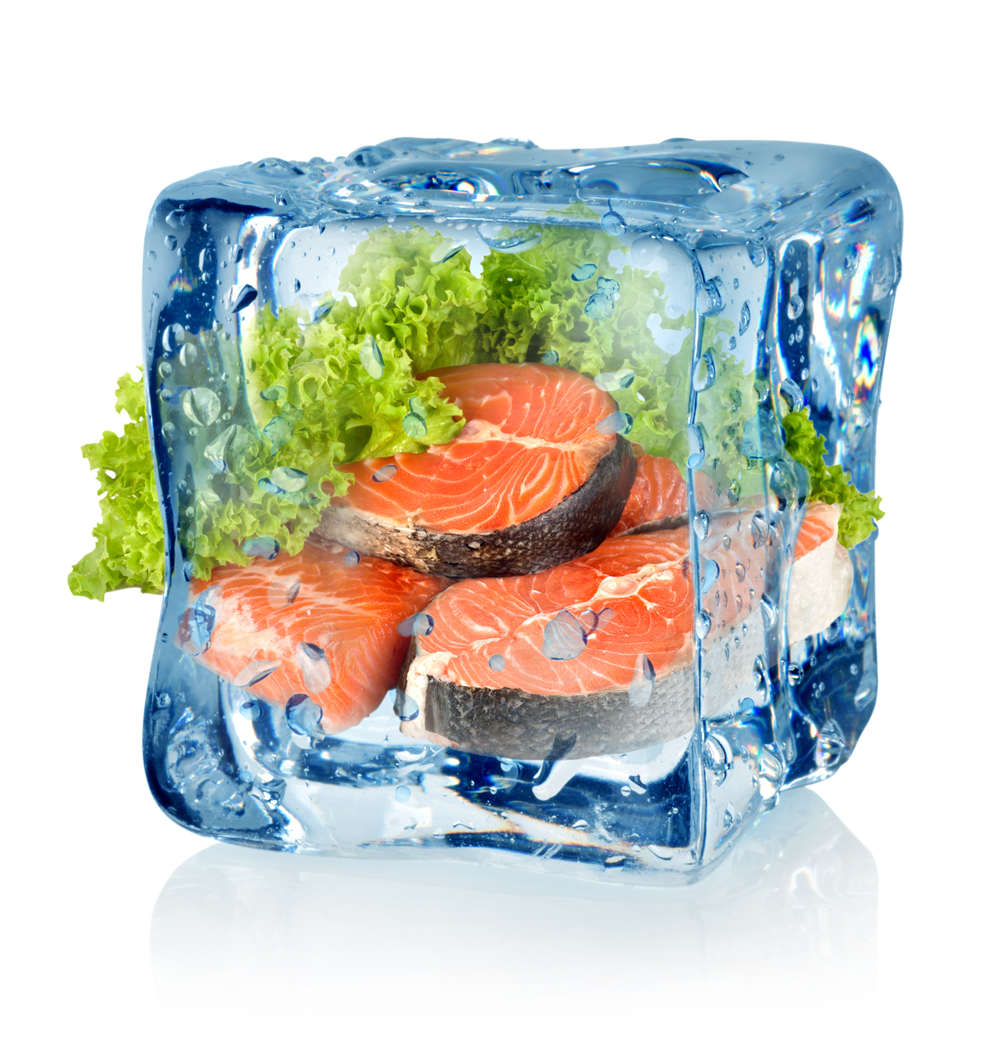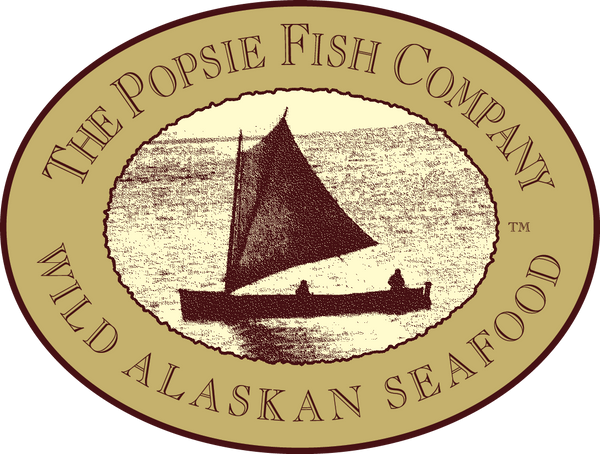
Flash Frozen Fish is Fresher than Fresh?
Flash Frozen Fish is Fresher than Fresh?
If you’ve ever eaten a fresh-caught fish cooked over a campfire, you know how scrumptious fresh fish can be: firm yet flaky, inimitably tasty - and not incidentally, bursting with nutrients.
If you’ve ever eaten a fresh-caught fish that you put in your home freezer and thawed weeks later, you know the quality was disappointing. Having done that ourselves, we know; our fish was mushy, bland, and suspiciously lacking in nutrients.
If you’ve ever eaten a fresh-caught fish served in a restaurant . . . well, you no doubt thought it was fresh. It was delicious and flaky, with superb texture and color. But unless that fish was caught off a pier behind the restaurant, it was almost certainly flash frozen miles away and shipped solidly frozen to your restaurant, where it was thawed shortly before being prepared for your dinner.
What is flash freezing?
Flash freezing - also called blast freezing - is a process that preserves the fresh qualities of the food that is being frozen.
It is the process of blasting very cold air at a very high speed across a food product in order to freeze that product as quickly as possible. When fresh-caught fish are flash frozen, their taste, color, texture and nutritional value are preserved, and product safety is ensured. (Bacteria have little opportunity to multiply under these quick-freeze conditions, so the food remains free of harmful microorganisms.)
The temperature of a flash freezer can vary from 14°F (-10°C) to an unimaginably frigid -184°F (-120°C) . . . different foods require different temperatures. Generally, fish are frozen in flash freezers with temperatures about -30°F (-34°C). Incredibly, fish are flash frozen in these ultra-low temperatures in just a matter of minutes.
We have the great adventurer, inventor and entrepreneur, Clarence Birdseye (yes, Birds Eye Foods), to thank for perfecting and implementing this basically miraculous flash-freezing machine. His inspiration came from Inuit fishers, way back in 1911, who showed him how they preserved fish all winter in their ultra cold climate. Being a gourmet food lover - one of the original foodies, perhaps - Birdseye marveled that their fish tasted as good as fresh. Fascinated and delighted, he began developing ultra-cold freezers. It was his life-changing innovations that revolutionized food production and eating habits. We believe Birdseye would be delighted that today we have flash freezers not only minutes away from shoreline set nets, but also right on fish-catching boats, ready to flash freeze fish shortly after they're removed from the water.
What is the science behind flash freezing?
After a fish is taken from the water, its cellular contents begin to lose energy. If exposed to freezing temperatures, the water molecules within each cell (fish are about 80% water) become attracted to each other to form solid ice. Following laws of science, those water molecules chemically bond to form geometric ice crystals within each cell.
The slower the rate of freezing, the larger the ice crystals. When fish are frozen slowly (like they are in a home freezer), those larger, spikier ice crystals take up space within the cell and punch through the cell membranes, causing damage and loss of liquid. When those crystals thaw, the damaged cells spill their contents into the surrounding flesh. The cellular structure loses its integrity and firmness, and the result is a mushy, less nutritious and less appetizing fish. Ice crystals only form between 25°F and 31°F, so the longer a food item spends in this temperature range, the more ice crystals that form.
The faster the rate of freezing, the smaller the ice crystals. Flash freezing captures the fish at the peak of perfection. Under flash-freezing/rapid- freezing conditions, the water molecules within the cells don’t have time to reposition themselves into connecting, lattice-like ice crystals, and thus stay tiny. Those small, intracellular crystals, almost unnoticeable, are distributed more evenly throughout the frozen tissue, and cause minimal cellular change.
When the fish is thawed, the result is a fish with undamaged cells and firm flesh, closely resembling the fresh version in taste, color, texture and nutritional value.
How to thaw frozen fish
There are two ways to safely thaw frozen fish:
In the refrigerator overnight. This is absolutely the safest, best way to thaw that beautiful piece of fish. The cool temperature of the refrigerator inhibits the growth of harmful bacteria and maintains the quality of the fish.
You can thaw your frozen fish in its original vacuum-packed bag. However, we prefer removing it from the bag and placing it on a couple of paper towels on a plate to absorb water. No need to cover the fish while it’s in the refrigerator. The outer areas of the fish will dry naturally in the circulating air of the fridge, which will actually help the fish cook better. (A wet fish won’t caramelize or crisp up.)
Depending on the size of your fish, it will take about 12-18 hours to thaw in the refrigerator.
In a sealed bag under cool running water. You can defrost right in the sealed, vacuum-packed bag containing the fish. Or, if you’re using fish packaged another way, you can place your raw, frozen fish into a tight, resealable bag. Fill a bowl with cool water and submerge the bag, using a weight on top if necessary.
Change out water as necessary to keep it cool. For safety and quality reasons, never try to speed things up by using warm water.
Depending on size, your fish should take about 20-30 minutes to defrost this way.
How NOT to thaw frozen fish:
On your counter for several hours.
This invites bacteria to grow and thrive.
The experts say not to let vacuum-packed fish be out in temperatures above 41° for more than two hours. We say follow our advice above and defrost in the refrigerator.
In the microwave on defrost.
Because all microwaves are different, we can’t recommend this. Sure, it’ll thaw your fish safely, but do you want to risk altering the taste and texture of your freshly caught fish just to save a few minutes?
Can you cook frozen fish without thawing it first?
Yes, but . . .
If you want to cook your flash-frozen fish without thawing it first, you need to select your method of cooking it carefully. Pan frying won’t work well, because the frozen fish may contain ice crystals that will melt and cause the fish to be soggy, or to cook unevenly.
Instead, we recommend that you bake, poach or steam your frozen fish, following the usual directions, but adding a few minutes to your cooking time. Choose recipes that involve medium to high cooking temperatures so your fish doesn’t remain in that danger zone of 40° F to 140° F for long, because that’s when bacteria can begin to grow.
If you’re really hungry . . . If you’re starving and just want to go for it, turn the oven on to 420°F, grab your fish from the freezer, rinse it off, pat it dry, salt it, pour on a bit of olive oil or coconut oil, or sour cream or mayonnaise, and pop it in the oven. Check after 10-15 minutes, depending on size. If you’re that hungry, you’ll probably love it!
What should I look for when buying frozen fish?
First, the basics: Don’t buy frozen fish if . . .
-
It isn’t frozen solid.
-
The package is ripped, torn or crushed
-
There are ice crystals or frost inside the package. (This could indicate that the fish has thawed and refrozen, or just been stored for too long.)
-
There are ice crystals within the flesh. (The fish may have been frozen slowly, causing damaging ice crystals to form.)
-
There are discolorations, perhaps indicating bruising.
-
The expiration date has passed.
-
You don’t have, waiting in your car, a cooler box with a big block of ice in it.
-
The color doesn’t look robust.
Speaking of color, wild caught Alaskan salmon are that quintessentially red-orange salmon color. Farmed salmon, in contrast, are a lighter pink color. (Actually, farmed salmon flesh would be grayish-white if the fish weren’t fed a diet enriched with carotenoids.)
Speaking of farmed salmon, we’ll refer you to this article: Wild-Caught vs. Farm-Raised Fish: What’s the Catch?
And speaking of wild caught Alaskan salmon, we’ll tell you where you can buy the best. (Hint: it will not be in a supermarket.)
Unless you’re catching it yourself and cooking it immediately, flash frozen fish are the absolutely freshest tasting salmon you can buy. Flash freezing basically stops time. Flash freezing locks in the delicious flavor, retains the natural moisture and preserves the wholesome nutrients of a freshly-caught salmon. There are many places where you can now buy flash frozen fish online, but the quality and service differs considerably.
If you’re looking for flash frozen wild caught sockeye salmon - which you should be, because it’s one of the tastiest and most nutrient-dense foods you can buy - you will find no finer fish nor service than that provided by The Popsie Fish Company.
